A question that worries many: why is watermelon a berry?
Watermelons are known as large green fruits, lying on store shelves in the same department as pumpkins, zucchini and pineapples. So should we consider it a fruit or a vegetable?
Having opened a biology textbook, we see a shocking answer: watermelon, tomato and currant are berries. It’s worth figuring out why watermelon is a berry, and how it got into the same category as tomatoes and currants.
Determining the type of watermelon fruit
The species Common watermelon (Citrullus lanatus) belongs to the genus Watermelon (Citrullus) of the Pumpkin family (Cucurbitaceae)Therefore, sometimes the fruit of this plant is called pumpkin. The genus Watermelon has several species: fodder, bitter, mucoseminal, several varieties have been bred in each species.
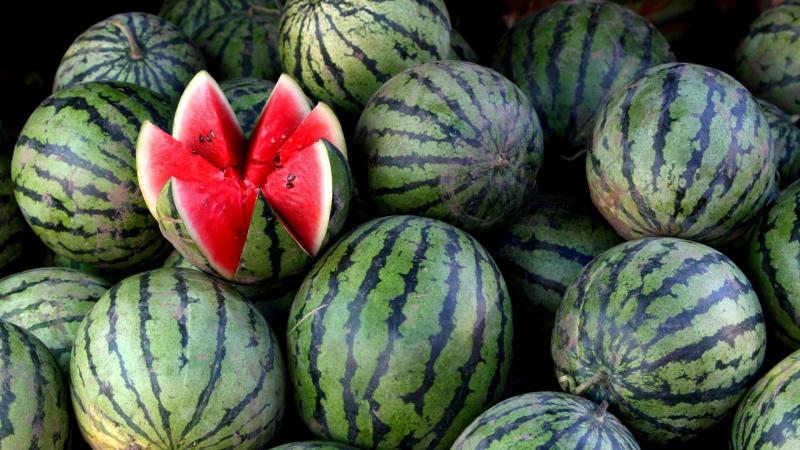
Agricultural definition
In agriculture, fruit classification is used:
- Vegetable - an unsweetened or sweetish fruit, root or tuber used as food. The overgrown part of the stem, like celery and asparagus, is also considered a vegetable. Vegetables are eaten with or without peel.
- Fruit - a single sweet fruit or infructescence that is collected from trees or bushes.
- Berry - sweet and sour fruits or fruits collected from herbaceous plants, trees, vines or shrubs. The berries can be eaten with the skin on, just like cherries and grapes.
- Nut - a dry, unsweetened fruit covered with a hard shell. This explains why pine seeds are called nuts, although cedar does not produce fruits like angiosperms.
- Corn - a dry seed, covered with a soft shell or without it.
Workers in the agricultural industry consider watermelon to be a false berry.
This is interesting:
Dangerous sugar: is it in watermelon?
Botanical definition
In the scientific field, a different classification has been adopted. It does not take into account the type of fruiting shoots and method of consumption. There are dry (grains, achenes, nuts) and juicy fruits. Succulent ones are divided into single-seeded and multi-seeded.
Single-seeded:
- drupe - a single seed covered with a hard shell, forming a stone, and a juicy pericarp (apricot, cherry, peach);
- false drupe - similar to drupe, but the pericarp is dry (walnut, chestnut).
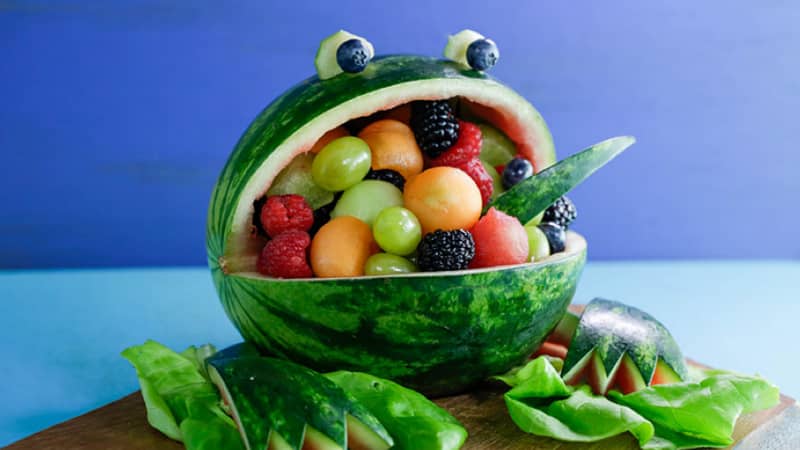
Polyspermous:
- the berry has a juicy pericarp and an abundance of seeds scattered in the pulp (tomato, eggplant, watermelon, banana);
- apple - juicy pericarp, there are many seeds, they are located in the center and separated from the pulp by a partition (pear, quince, apples);
- pomegranate – the pericarp is dry, each seed is covered with a juicy shell (characteristic only of pomegranate);
- pumpkin - a fruit with a hard skin, a juicy pericarp and seeds located in an empty cavity in the center of the fruit (melon, pumpkin, zucchini, cucumber);
- false berry (cinnarodium) – juicy pulp develops from the peduncle, seeds can be inside or outside the pulp (strawberry, rose hip);
- polydrupe - a collection of seeds, each of which is covered with juicy pulp (raspberries, blackberries);
- bean - dry pericarp with opening flaps (beans, peas).
From a botanical point of view, watermelon is a real berry.
Signs of a “berry” type fruit:
- leathery shell;
- juicy pulp;
- 1, 2 or many dense seeds inside;
- the seeds are not separated from the pulp, sometimes weakly attached to it;
- the seeds do not have a hard shell and do not form a seed.
Botanical description of the common watermelon species
Watermelons, which everyone is used to enjoying in late summer and autumn, - these are the fruits of an annual herbaceous plant that spreads along the ground and is called a liana. Breeders have succeeded in obtaining a variety of table watermelon whose shoot is a bush.
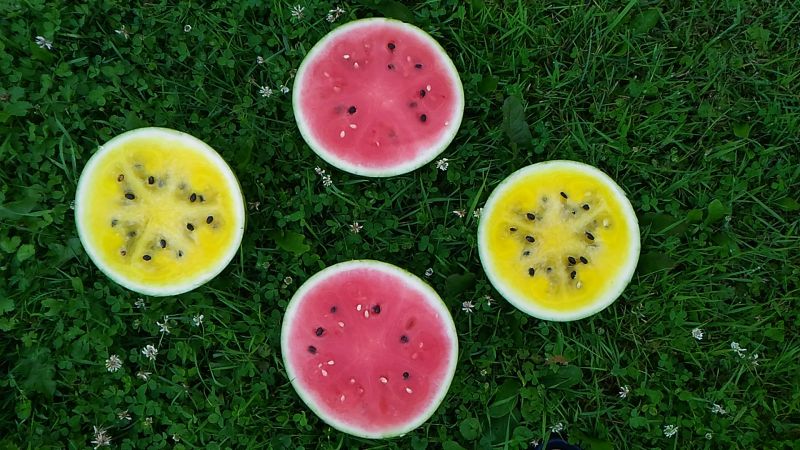
The stem of the plant is pubescent. The leaves are covered with a waxy coating, sit on long petioles, tendrils emerge from the axils of the leaves, the leaf blade is cut into lobes, but there are varieties with whole leaves. The type of watermelon root system is taproot, penetrating into the soil to a depth of 1 m.
Watermelon has 3 types of flowers: male, female and bisexual. The shape of the flowers is broad-funnel-shaped, the color is yellow or greenish-yellow.
The fruit is a multi-seeded berry, can be round, elongated, flattened or pear-shaped. The peel is smooth or slightly lumpy, the color, depending on the variety, can be different shades of green, the pattern is reticulated, striped or spotted. The flesh of the fruit can be pink, red, crimson or yellow.
History of the origin of watermelon
The homeland of watermelon is tropical Africa. Wild watermelons still grow in the Namib Desert and Kalahari Semi-Desert.
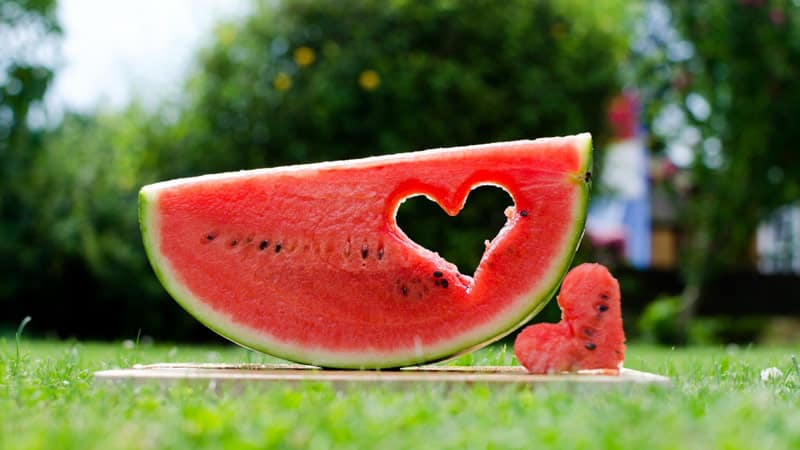
In 2000 BC, the Egyptians found these bitter fruits no larger than a grapefruit in diameter and started breeding them. Thanks to their work, watermelon acquired the familiar look and taste.
In the 8th-20th centuries, watermelons were brought to Russia from India.. First, this culture took root in the Volga region, then it acclimatized, and by the 17th century it was spread not only in the southern but also in the central part of the country.
Read also:
The benefits of watermelon juice and how to prepare it correctly
Features of growing melons
Watermelons grow on neutral sandy soils. This is a drought-resistant plant, but during the growth period it consumes a lot of water. Dry or moderately humid air together with abundant watering of the soil is the basis for obtaining a sweet harvest. The more humidity and less sun, the more watery and bland the fruits will be.

Watermelon seeds remain viable for up to 10 years. Planting is carried out in the ground when the soil has warmed to a depth of 10 cm. After germination, the seedlings are thinned out, leaving the strongest shoots at a distance of about 1 m from each other.
Watermelon seedlings can be watered once a week, but generously (3 buckets per 1 m² of soil). At the time of flowering, watering becomes more frequent up to 2 times a week. When the fruits ripen, watering is stopped.
Attention! Plants do not tolerate cold. When the temperature drops to +15 °C, they are covered in 2 layers: gauze (to collect condensation) and film (for insulation).
If the weather is not favorable with sunny days during flowering, insects stop pollinating plants. In this case, artificial pollination is carried out by touching the stamens of one flower to the pistils of several other flowers.
To get larger fruits, remove the tops of the shoots, then the plant puts its energy into branching and producing fruits.
Useful properties of watermelons
Watermelons are considered a dietary product, 100 g of the edible part of the fruit contains only 27 kcal. By nutrient content:
- proteins – 0.7 g;
- fats – 0.1 g;
- carbohydrates – 5.8 g;
- organic acids – 0.1 g;
- dietary fiber – 0.4 g;
- water – 92.6 g;
- inorganic salts – 0.3 g.
Watermelon pulp is a source of vitamins:
- retinol – 17 mcg (1.6% of the daily value);
- beta-carotene – 0.1 mg (0.9%);
- vitamin B1 – 0.04 mg (0.2%);
- vitamin B2 – 0.06 mg (2.6%);
- vitamin B5 – 0.221 mg (2%);
- vitamin B6 – 0.09 mg (4.1%);
- vitamin E – 0.1 mg (1.9%);
- vitamin K – 0.1 mcg (2%);
- vitamin PP – 0.3 mg (2.7%);
- niacin – 0.2 mg (3.3%);
- folates – 8 mcg;
- ascorbic acid – 7 mg;
- choline – 4.1 mg;
Of the macroelements, watermelon pulp contains potassium, calcium, silicon, magnesium, sodium, sulfur, phosphorus and chlorine. Trace elements include aluminum, boron, vanadium, iron, iodine, cobalt, lithium, manganese, copper, selenium, fluorine, chromium and zinc.
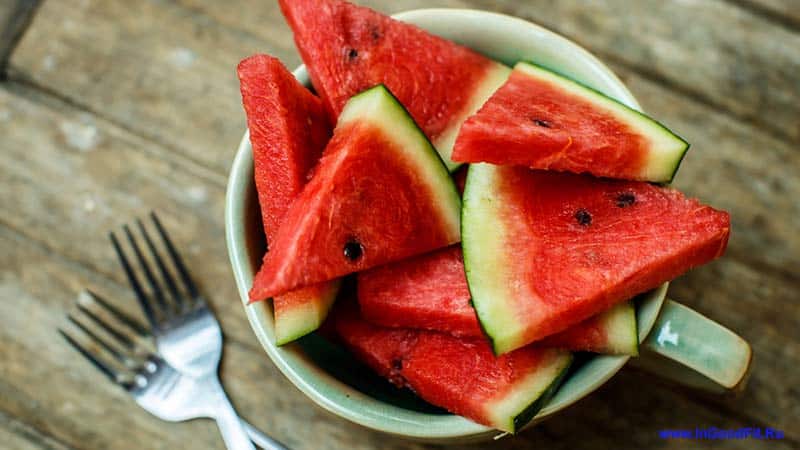
Watermelon is useful for people with diseases of the genitourinary system and digestive tract in remission, it relieves attacks of heartburn. As a low-calorie product, it is recommended for patients with excess body weight. It is not recommended to consume watermelons in large quantities if you have diabetes and pancreatic diseases.
Conclusion
In agriculture, watermelon is called a false berry, but not a vegetable or fruit. Botanists define watermelons as a multi-seeded berry.
No matter what watermelon is called from the point of view of classification, people love it not for its name, but for its sweet, pleasant taste. In addition to its taste, the advantage of watermelon is the variety of nutrients it contains, vitamins, macro- and microelements, as well as its low calorie content.